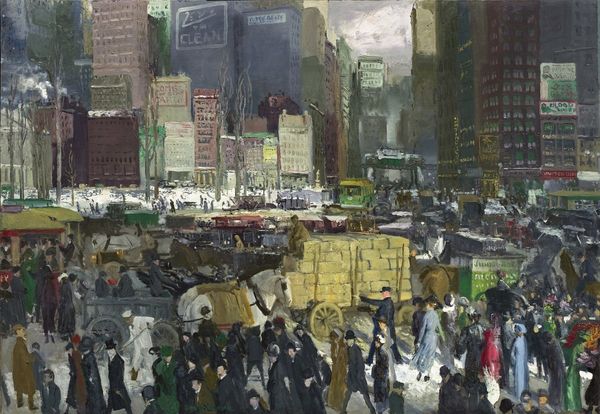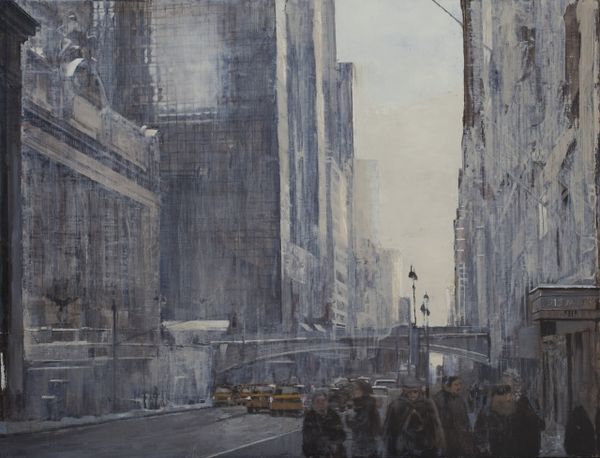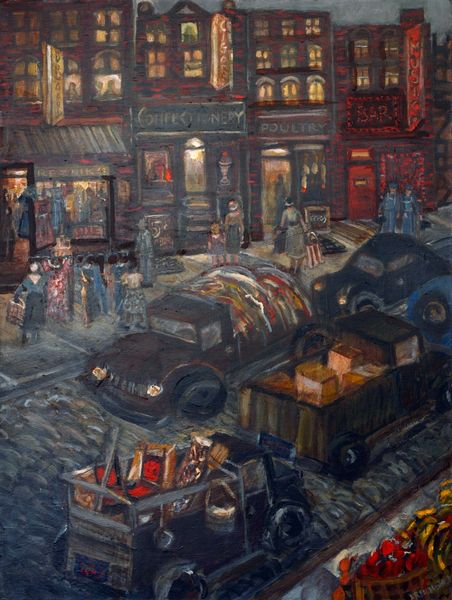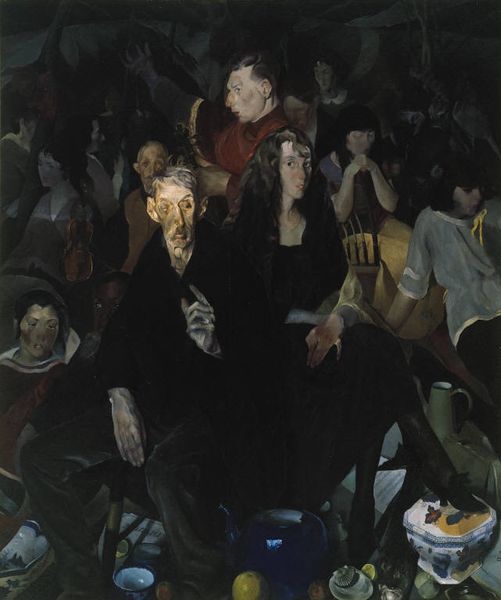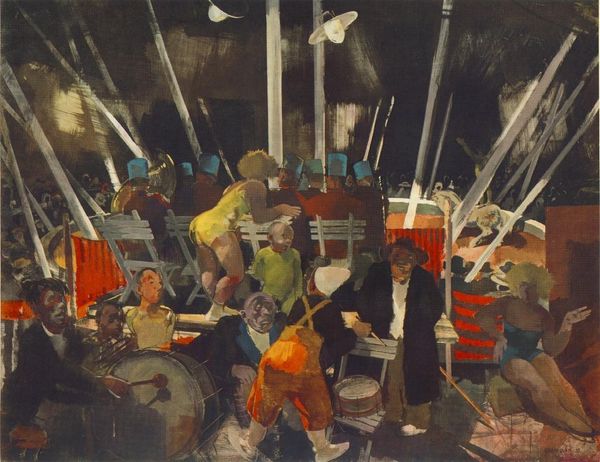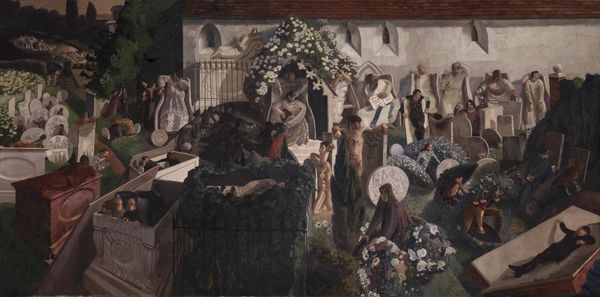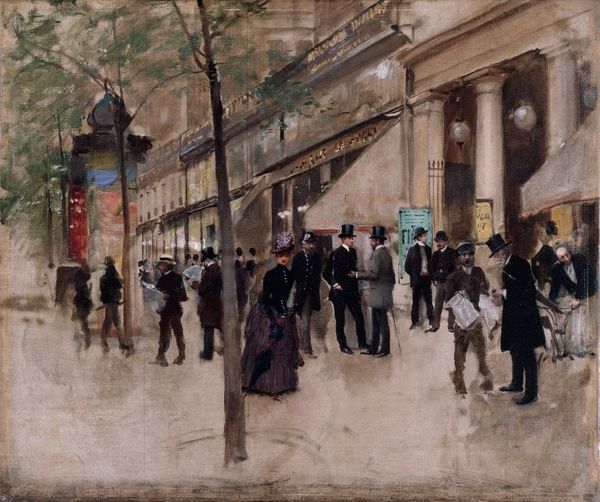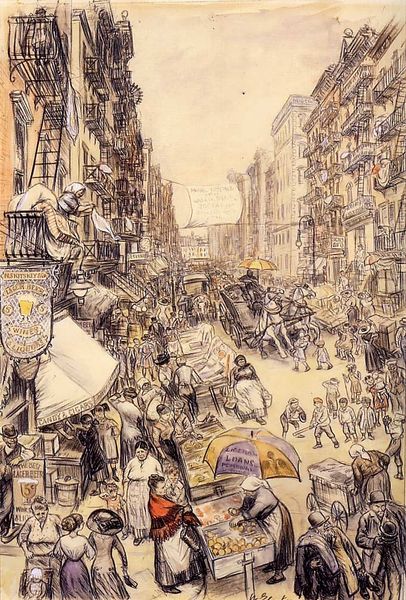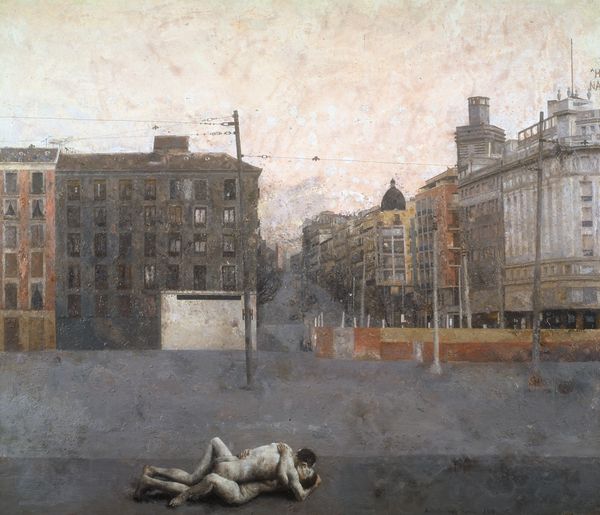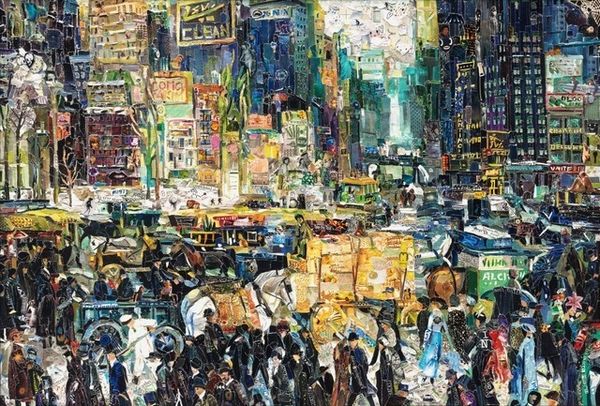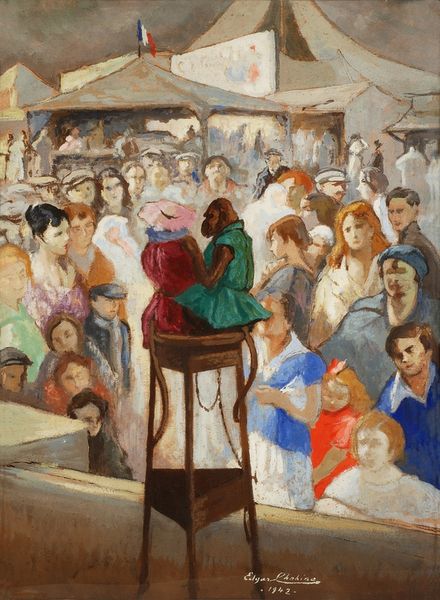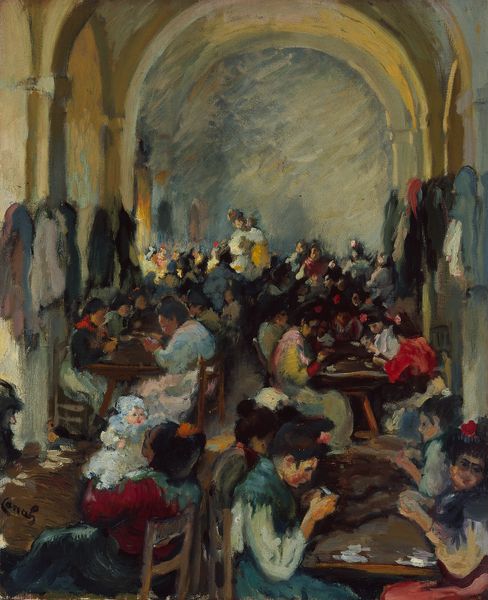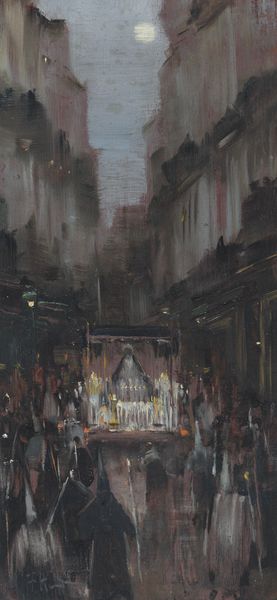
oil-paint, impasto
#
portrait
#
oil-paint
#
social-realism
#
oil painting
#
impasto
#
group-portraits
#
ashcan-school
#
cityscape
#
genre-painting
#
history-painting
#
modernism
#
realism
Copyright: Public Domain: Artvee
Editor: Here we have George Bellows's "Cliff Dwellers" from 1913. It's an oil painting depicting a bustling city scene. I’m struck by how crowded and almost chaotic it feels, yet there's also a sense of community. How do you interpret the imagery Bellows uses to depict urban life here? Curator: The painting indeed vibrates with a kinetic energy born from dense living. Bellows isn’t just showing us a cityscape; he’s presenting a visual language loaded with symbols. The laundry strung between buildings, for instance, is it merely practical, or does it suggest something more—the fragile barriers between private lives lived in cramped proximity? Editor: I hadn't thought of the laundry that way, interesting! What about the people themselves, crammed into the foreground? Curator: Observe their faces, their postures. Do you see a celebration of the melting pot, or a cautionary tale about overcrowding and its psychological toll? Each figure is rendered with individual character, but also contributes to the overall impression of teeming masses, calling to mind questions about anonymity and identity within the urban landscape. Does the composition suggest anything to you? Editor: It almost feels like a stage, with different groups acting out their parts. The women on the stoop seem like spectators. Curator: Exactly! This "stage" implies layers of spectatorship, reflecting how we observe and are observed within a community. The city becomes a theatre of human life, where symbols of prosperity mingle with evidence of hardship. How does that stage differ, for instance, from images of Eden in the European tradition? Editor: I guess that there is something much darker here than Eden's traditional view, yet not devoid of humanity and life. This really makes you think about the story behind each figure and their environment. Curator: Precisely. Bellows invites us to become cultural archaeologists. By deciphering these symbols, we gain insight into not only the historical context, but the universal experiences of urban existence.
Comments
No comments
Be the first to comment and join the conversation on the ultimate creative platform.
